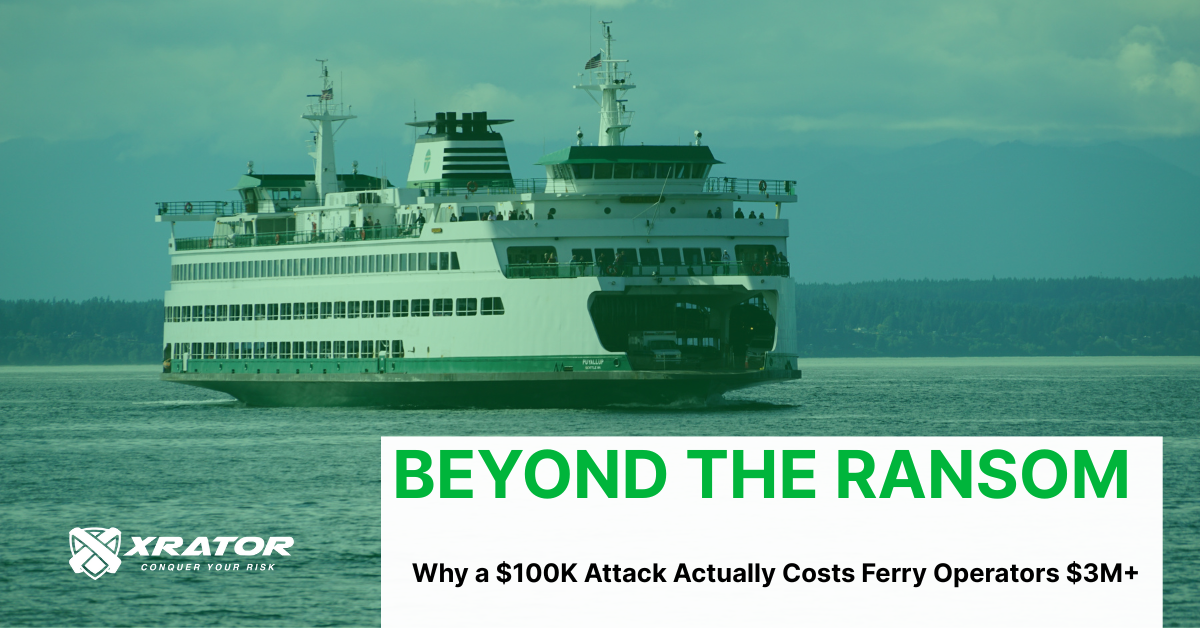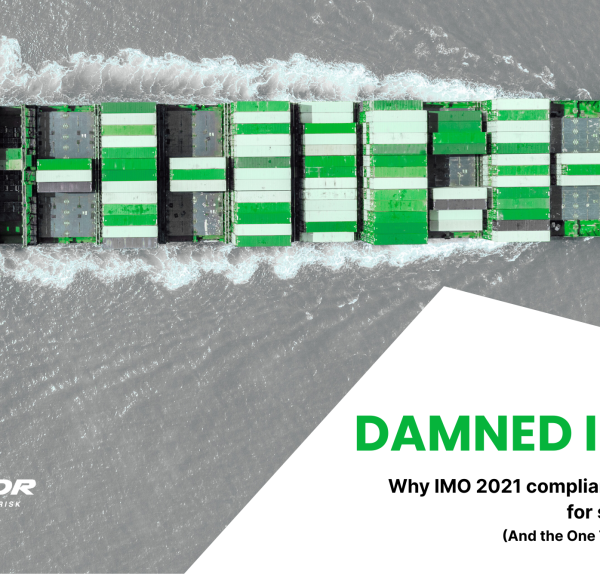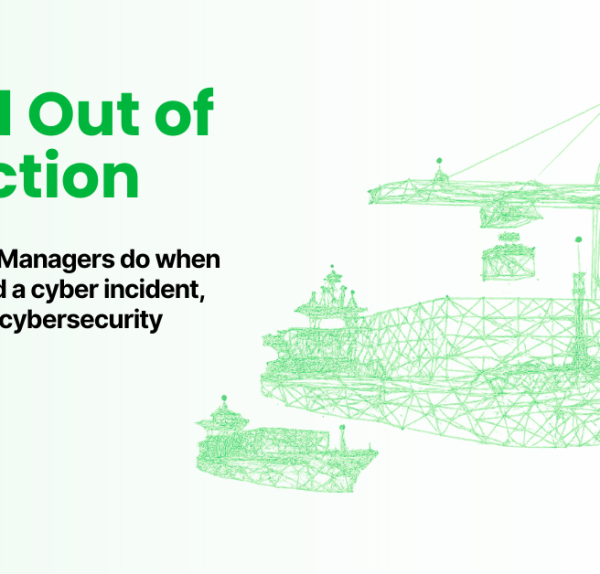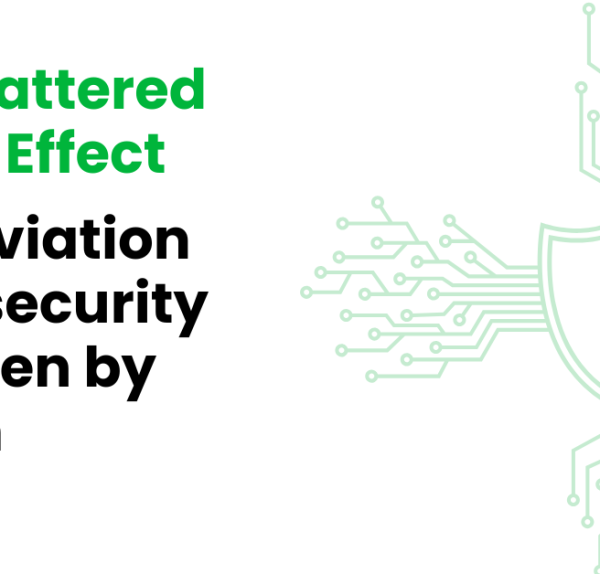Wednesday, June 2, 2021, 6:30 AM. A ferry operator nightmare. The phones started ringing at the Steamship Authority’s Woods Hole terminal. “I can’t change my reservation online.” “Your website is down.” “What’s happening?”
What happened was this: The Woods Hole, Martha’s Vineyard and Nantucket Steamship Authority detected a ransomware event impacting certain operations that would keep their reservation systems offline for 10 full days and cost the organization far more than any ransom demand ever could.
The Steamship Authority (Massachusetts’ (USA) largest ferry service carrying millions of passengers annually to Martha’s Vineyard and Nantucket) had just become the latest maritime operator and ferry operators to learn a harsh truth: the ransom is just the tip of the iceberg.
If you’re a Safety Director or Operations Manager at a ferry company, this incident should be required reading. Because while most operators focus on the headline-grabbing ransom numbers, the real financial devastation happens in the weeks and months that follow.
Cybercriminals love summer season when everyone is in holidays, taking ferries and cruise : get a free attack surface assessment to safeguard your maritime operation revenues.
1. The $100k ransom that actually costs $3M
Here’s what most ferry operators get wrong about cyber attack costs: they think paying the ransom ends the problem. Let’s examine what a typical ransomware attack actually costs a mid-sized ferry operation, using real industry data and the Steamship Authority case as our baseline.
1.1 Direct costs: the visible 30%
Immediate Response and Recovery: $400,000 – $800,000. Organizations often must hire external specialists for It forensics and system restoration, PR management, legal counsel, breach notification vendors, and incident negotiators. Depending of the depth of the breach and local regulation, they also face legals fees and regulatory compliance scrutinity. Finally, affected customers may also requiered credit monitoring.
Business Interruption: $200,000 – $600,000 per week. Unplanned downtime alone can cost maritime firms as much as $100,000+ per hour, it all depend of your operational incomes depending on the hour of the day, the seasons and sales cycles. Organizations also need to account for lost reservation revenue opportunity during system outage, overtime costs for manual processing or extended customer service hours (the Steamship Authority had to extend reservation office hours to 7:00 a.m. to 6:00 p.m. to handle backlog).
Each company will have different loss structures, but the frame is pretty straightforward. You can rely on your current analytical accounting work and run several scenario to have a good enough estimation. But for the total loss estimation that include the hidden costs of cyber attacks ? You can empirically multiply it by 3 to 5 to have you total loss estimation.
1.2 Hidden costs: the devastating 70%
Operational Disruption: $500,000 – $1.2M. The Steamship Authority couldn’t process credit cards for days, forcing cash-only transactions. Customers were unable to book reservations online for about ten days earlier the month of the attack. For ferry operators, this translates to manual ticketing and processing delays, reduced passenger throughput, staff redeployment and overtime and lost advance bookings during peak season.
Long-term Revenue Impact: $800,000 – $2M. The effects of a cyber attack last well after the end of the incident, with some impacts being unrecoverable. Customers depending on your service can switch to a competitor, and never return because they found an equivalent or better offer, or because they lack the ernergy to revert to their original habits. You may face reduced advance bookings due to lost confidence. To counter those effects, you may discounting to win back customer trust. But you will hardly win back insurer trust that will increase your premium with a very slow cool down (cyber insurance premiums can increase 20-40% post-incident).
Brand and Competitive Damage: $300,000 – $1M. Loss of trust among customers, regulators, investors, and partners can severely affect an organization’s public image and long-term viability. In the ferry business, where customer loyalty and advance bookings drive revenue, this is particularly damaging.
Beyond the price to technically remediate the attack and provide business continuity, the total real cost range is $2.2M – $5.6M. Compare this to the average ransom payment was reported to be $1.5 million in 2024, reflecting a 1000% increase from the previous year’s $199,000, and you see the problem: even if you pay the ransom immediately, you’re still looking at millions in hidden costs.
“Ransomware attacks on U.S. ports increased in 2024 in both frequency and sophistication. The Port of Seattle, for example, was attacked in August, causing major disruption.”
IBM’s Roundup: The top ransomware stories of 2024
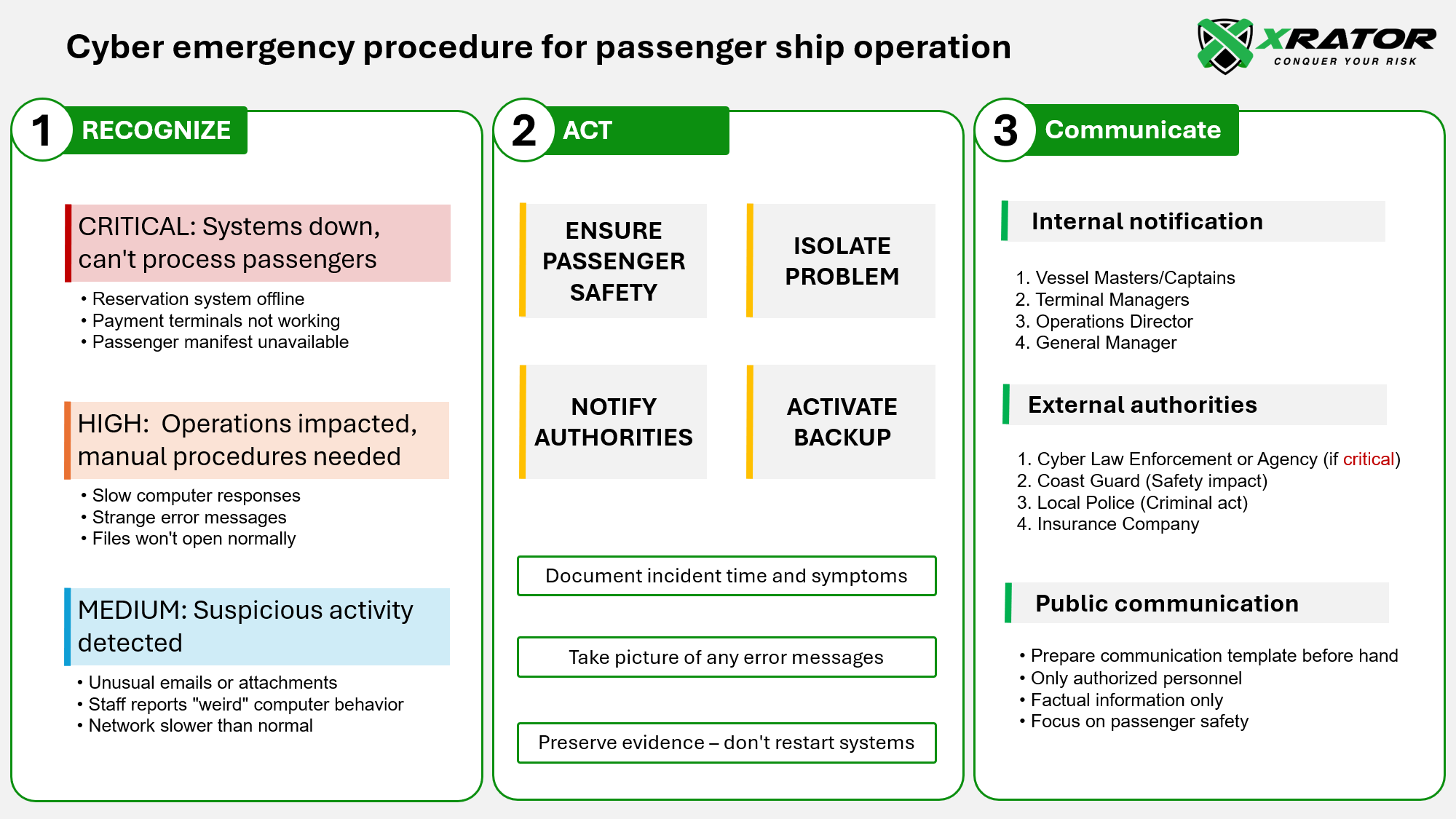
2. What ferry operators wish they’d known
The maritime industry is becoming a prime target for cybercriminals. About 1,000 vessels were affected by a ransomware attack affecting a major software supplier for ships and offshore structures when DNV’s ShipManager platform was compromised.
Key Industry Statistics:
- The average cost of a ransomware attack in 2024 was $4.9M, with costs growing 574% from 2019 (IBM)
- The average downtime from ransomware is 24 days (PurpleSec)
- Ransomware attacks increased by 149% year over year in the first five weeks of 2025 (AxisInsurance)
For ferry operators specifically, the stakes are even higher due to:
- Seasonal Revenue Concentration: Most ferry operations generate 60-70% of annual revenue during summer months
- Customer Dependency: Passengers and cargo depend on reliable, bookable service
- Regulatory Scrutiny: Insurer and regulators increase premium and audit control
3. Voices from the deck: what affected ferry operators actually say
“This incident was a criminal act, and we continue to work with law enforcement as part of the ongoing investigation… the Steamship Authority did not pay a ransom or engage with the cybercriminals. ”
Robert B. Davis, General Manager, Steamship Authority (CBSNews)
The key lesson Davis emphasized: “new safeguards have been implemented as a result of lessons learned during this attack”. What they wish they’d known beforehand:
- Business continuity planning saved them: In line with our business continuity plan, we immediately took steps to ensure the continued operation of our ferries. As a result, all existing customer reservations were honored, and no scheduled trips were canceled
- Manual processing capabilities are critical: The ability to honor existing reservations and process cash payments prevented complete operational shutdown
- Communication is everything: Regular updates to customers and stakeholders minimized additional reputational damage
The ferry operator discovered the devastating hidden costs of a cyber attack with extended IT staff overtime for weeks during recovery, customer service volume increased 400% during the outage, lost advance bookings for the entire summer season due to reservation system downtime and had to go through regulatory reporting and compliance costs with multiple agencies (FBI, Coast Guard, State Police).
4. The ROI Reality Check: Prevention vs. Recovery Costs
Here’s the calculation that should terrify every ferry Safety Director:
Investment in Prevention: $50,000 – $200,000 annually
- External attack surface assessment: free
- Comprehensive staff cybersecurity training: $15,000
- Advanced endpoint protection and monitoring: $15,000
- Advanced cyber risk prioritization: $24,000
- Backup and recovery systems: $20,000
- Cyber insurance (proper maritime coverage): $35,000
- Incident response planning and testing: $20,000
- Network segmentation and access controls: $30,000
Total annual full preemptive cybersecurity investment: $159,000.
Cost of Single Incident: $2.2M – $5.6M
Put simply: IBM’s 2024 Cost of a Data Breach Report found that companies that invest extensively in security AI and automation faced an average breach cost of $3.84 million in 2024, while those that used none at all had an average breach cost of $5.72 million.
ROI of Prevention: 1,300% to 3,400%
5. Your cyber monday routine: the 3 months painless plan for ferry safety directors
Here’s your 90-day implementation roadmap, designed for ferry operations running on tight margins with seasonal staff and aging systems.
4.1 Week 1: Emergency Assessment ($0-$500)
Map your three critical systems: reservation platform, point-of-sale terminals, and vessel tracking. Walk through terminals and identify every internet-connected device including credit card readers, security cameras, and staff computers. Document who has administrative access to each system. You’ll likely discover shared passwords, unchanged default credentials, and more connected devices than expected.
Identify your cascade failure points where a cyberattack creates operational shutdown. For most ferry operators, this means reservation systems and payment processing. During peak season, manual processing realistically reduces throughput by 60-70%, creating the kind of revenue hemorrhaging the Steamship Authority experienced.
Weeks 2-4: Ferry-Proof Backup Plan ($2,000-$8,000)
Create analog resilience through paper-based passenger manifests that match your digital templates. Work with your reservation system provider to establish automated daily exports of passenger manifests, vehicle reservations, and customer contact information. Store these on an isolated laptop never connected to the internet.
Train terminal staff on manual processing procedures that maintain 40-50% operational capacity during extended outages. Practice cash-only transactions, hand-written passenger logs, and radio communication protocols. The Steamship Authority survived because they could honor existing reservations and process cash payments when digital systems failed.
Months 2-3: Strategic Implementation ($15,000-$35,000)
Segment your network into separate zones for passenger systems, vessel operations, and administration using business-grade firewalls and managed switches. Ensure compromise of reservation systems cannot spread to vessel safety equipment. When the Steamship Authority was attacked, their radar and GPS remained functional because these systems were properly isolated.
Deploy endpoint protection designed for transportation operations that handles legacy reservation systems, seasonal employee devices, and intermittent connectivity. Establish backup internet connections at each terminal through cellular hotspots or secondary ISPs to maintain basic operations even if primary connections are compromised.
Frame cybersecurity as an extension of existing maritime safety culture. Ferry operators already understand safety checklists and emergency procedures. Build cyber incident response that integrates with your established protocols for coordinating with maritime law enforcement authorities and state authorities during marine emergencies.
The goal isn’t transforming your operation into a cybersecurity company but building resilience that protects your ability to safely transport passengers when digital systems are compromised.
6. The bottom line for ferry decision-makers
If you take away one thing from this analysis, make it this: The ransom demand is never the real cost of a cyber attack. For ferry operators, the average total impact ranges from $2.2M to $5.6M per incident, with the potential for even higher costs during peak operating seasons.
The math is simple: Investing $165,000 annually in proper cybersecurity measures provides a 1,300% to 3,400% return on investment compared to incident recovery costs.
The urgency is real: U.S. ransomware attacks increased by 149% year over year in the first five weeks of 2025, and ferry operators are increasingly targeted due to their seasonal revenue concentration and customer dependency.
The Steamship Authority survived their attack because they had business continuity plans in place and made smart decisions during the crisis. But they still faced significant financial impact and operational disruption that could have been minimized with better preparation.
Don’t wait for your 6:30 AM wake-up call.
Ready to Calculate Your Real Cyber Risk?
Understanding the true cost of cyber attacks on ferry operations requires more than industry averages: it requires analysis specific to your operation size, seasonal patterns, and risk profile.

